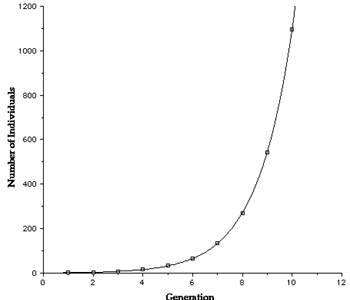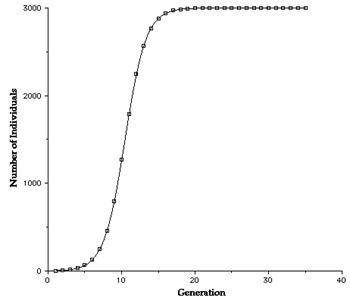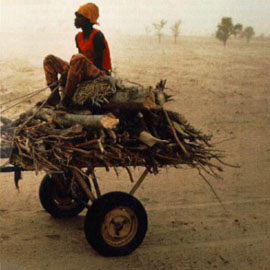BIOL 1400 -- Lecture Outline 26
"Growth for the sake of growth is the ideology of the cancer cell." --Edward Abbey
I. Organisms do not live in vacuums!
- Ecology is the study of how organisms interact with each other
and with their surroundings.
- Ecology can be studied at various levels of organization:
- Population -- set of all members of a single species in one area.
- Community -- set of interacting populations of different species.
- Ecosystem -- sum of communities and their abiotic (non-living)
surroundings in one area.
- Biome -- set of similar ecosystems.
II. Population ecology
- Population growth
- Any population, given unlimited resources, will grow exponentially
over time. (The curve of such growth is called a J-curve because of its shape.)

- Such growth obviously can't be sustained in nature for very long.
- Suppose we had a single bacterium which was fully supplied with nutrients
and kept at the optimum temperature, acidity, etc. Under such conditions a bacterium
can divide about once every twenty minutes. If division happened at this rate with no restrictions, within two days we would have a glob of bacteria that weighed 366 times
as much as the Earth. In less than a week we would have more bacteria than there are
atoms in the known Universe. Obviously, this doesn't happen in reality. . .
- Many factors, both biotic (living) and abiotic (nonliving), determine an
ecosystem's carrying capacity -- the maximum number of individuals in
a population that it can stably support.
- Biotic factors include presence of predators or parasites, presence of
prey or other food sources, etc. . . .
- Abiotic factors include amount of sunlight, temperature, moisture levels,
nutrient availability, oxygen levels, etc. . . .
- Populations often grow to reach the carrying capacity and then level off as
they approach carrying capacity. This is referred to as logistic growth.
The resulting curve is a sigmoid or S-shaped curve.

- Alternatively, a population might fluctuate around the carrying capacity,
overshooting and then undershooting, with or without leveling off. . .
- . . . or, in some situations, overshoot and then crash.
- CASE STUDY: In northern Canada, the Hudson Bay Company buys and markets
animal furs from trappers, and it keeps records of how many furs of which animals
are bought -- thus they have records going back over 150 years. . .

Notice how the populations of prey (hares) and predators (lynx)
regularly fluctuate. Why might this be the case? Notice that the two populations
don't fluctuate quite in sync. . .
- An important thing to keep in mind is that the carrying capacity of an environment
is not fixed. An organism might modify the carrying capacity of its own environment
by its own activities.
- EXAMPLE: New farming methods have increased the world's food supply dramatically
over the past few hundred years, thus boosting the carrying capacity of humans.
On the other hand, 10% of the world's fertile topsoil has been lost since 1945, often
due to human mismanagement, pulling the carrying capacity down. . .
- For a specific example: The region of Africa just south of the Sahara Desert
is a dry grassland called the Sahel. Because of overgrazing by livestock and poor
irrigation practice, 3900 square miles of the Sahel become desert each year.
(That's an area about equal to six average-sized counties in Arkansas.) The carrying
capacity of the countries in the Sahel -- such as Mali, Burkina Faso, Chad, Niger,
etc. -- is dropping, while at the same time the population itself is rapidly rising.

A scene in the Sahel. . .
- Life History Strategies
- r-selected organisms maximize total number of offspring produced, with
little parental investment per offspring. Most mortality is in the juvenile stage
-- i.e. most offspring die very young.
EXAMPLES of r-selected organisms: Oysters, giant clams, corals, weeds. . .
- K-selected organisms produce much fewer offspring, but with
high parental investment per offspring. (This could include parental care,
large nutrient-rich eggs or seeds, nourishing developing embryos in mother's body, etc.)
Most mortality is in adult stage -- i.e. most offspring survive to maturity.
EXAMPLES of K-selected organisms: Humans, most mammals, birds. . .
- There are variations on these strategies, and many organisms have a
life history that lies in between these two poles.
Go to Previous Notes |
Return to Lecture Schedule |
Return to Syllabus |
Contact the Prof |
Go to Next Notes



